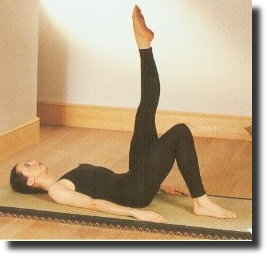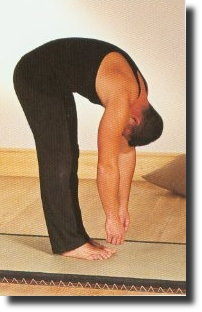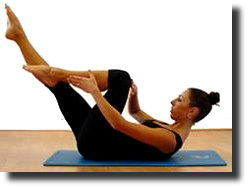What do I get from Clinical Pilates?
What is special about Clinical Pilates?
Clinical Pilates

Developed in the early 1920s by Joseph Hubertus Pilates, “Pilates” is a total body conditioning method that uses concentrated, controlled and co-ordinated movements to achieve significant results. Pilates combines elements from yoga, dance, gym and boxing along with other original movements. It is often described as having a mind-body connection, as Pilates involves re-learning correct human movement patterns and relocating “forgotten” muscles! To do this requires thought and concentration and not mindless exercise.
The technique provides improvements in:
- Muscle Length
- Co-ordination
- Muscle Control
- Strength & Endurance
- Posture
- Flexibility
Pilates focuses on the quality of movement at an individual level and when taught by a suitably qualified instructor is safe and relaxing, yet challenging. Pilates is suitable for a wide range of people of all ages and can be used for a variety of goals such as improving general fitness, sports specific rehabilitation and pre and post pregnancy conditioning.
Over the years Hubert Pilates original method has matured and developed as a technique, drawing from many other complimentary disciplines. The technique continues to evolve to incorporate the latest developments in sports and rehabilitation research.
What are the rewards of Pilates?

The rewards of Pilates can be quickly seen in:
| ⊕ improved posture | ⊕ improved breathing and balance |
| ⊕ efficient flexible movement | ⊕ toned elongated physique |
| ⊕ prevention of injuries | ⊕ stress release and relaxation |
| ⊕ enhanced sports performance | ⊕ increased core strength |
| ⊕ co-ordination and control | ⊕ pain relief and improved circulation |
What is special about Clinical Pilates?

Clinical Pilates was started in the early 1990’s where rehabilitation specialists such as physiotherapists (especially in Australia) began to incorporate Pilates exercises and equipment into their protocols, but found that some aspects of what they were importing did not sit well with the best available evidence from sports therapy and rehabilitation research.
By combining the original Pilates exercises with well-established physiotherapy concepts, Clinical Pilates was born. The concept is to modify the original Pilates mat work exercises, to minimise the potentially harmful effects of the original exercises that can be too vigorous for injured people or for those who are new to pilates. This equips the client with body movement skills that will allow them to exercise without re-aggravating injuries.
Why choose Pilates with Mount Physio?
Tuition with one of the Mounts Pilates trained physiotherapists provides in-depth instruction in the principles, technique and practice of Pilates. Our physiotherapists are trained in understanding movement dysfunction and are equipped to deal with a vast array of muscle and joint problems. As a result of this you will discover the cause of your movement dysfunction. With corrective training, application and time (weeks to months), you will improve your control and awareness in this area and get back to doing the things you want to be able to do.
Clinical Pilates vs Fitness Pilates
| Clinical Pilates | Fitness Pilates |
|---|---|
| Includes comprehensive diagnostic and rehabilitation tools for injury and performance enhancement. | Dance-orientated exercises used for general conditioning and lifestyle benefits. |
| Progresses from static and dynamic stabilisation of the postural muscles to more emphasis on strength elements of pilates when you are ready for them. Control of pelvis stability and neutral spinal alignment comes before end of range flexibility. | Tendency towards flexion, stretching, end of joint range movements, moderate to high strength required. |
| Aims to fulfil criteria from established research on how the muscles of your body function. | No evidence to support its use in rehabilitation of low back/neck pain. |
| Observes painful joints, muscles and nerves under load and modifies exercise accordingly. | Does not take into account injured tissue and has difficulty in modifying for specific client populations. |
| Prioritises strict adherence to scientific interpretation of the Pilates principles (taught in class). | Prioritises variety of movements and exercises. |
| Classes are smaller in number and provide excellent supervision. | Tend to have high class numbers and therefore low supervision from instructors. |
Golf specific Pilates - raising your game and lowering your handicap
Description of golf pilates

